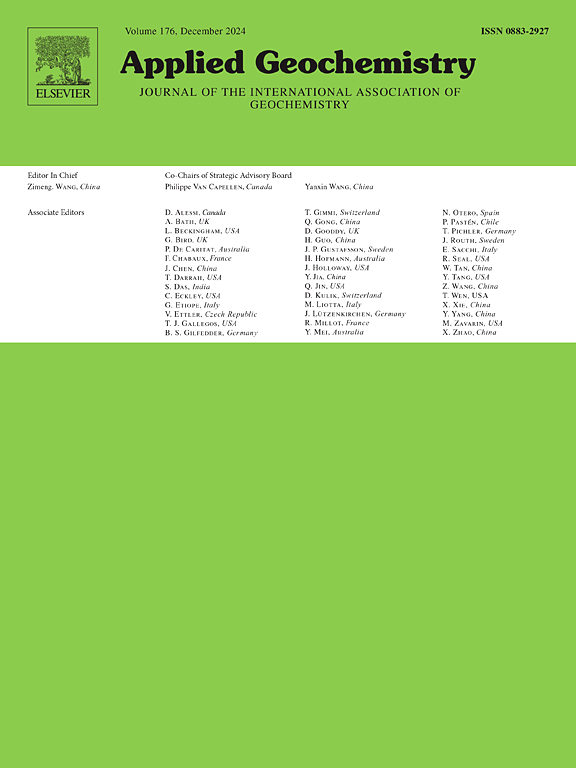Using Reaktoro for mineral and gas solubility calculations with the Extended UNIQUAC model
IF 3.1
3区 地球科学
Q1 GEOCHEMISTRY & GEOPHYSICS
引用次数: 0
Abstract
The extended UNIQUAC model is a thermodynamic model able to estimate thermodynamic properties of aqueous electrolyte solutions under a wide range of temperature, pressure, and composition conditions. Thermodynamic properties include species activity coefficients, excess molar Gibbs energy, excess molar enthalpy, excess molar heat capacity. These properties are important for aqueous speciation calculations, mineral and gas solubility computations, chemical kinetic modeling of mineral dissolution and precipitation, and in reactive transport simulations considering chemically complex aqueous electrolyte solutions. In this paper we present a brief literature review on the extended UNIQUAC model, we report on its implementation in C++ in the Reaktoro framework for modeling chemically reactive systems, and we show its use from Python for computing mineral and gas solubilities in aqueous solutions at a wide range of temperature, pressure, and salinity conditions. We validated the calculations against experimental data and results obtained through the software ScaleCERE implementing the extended UNIQUAC model. Our conclusion is that the extended UNIQUAC model has been successfully implemented into the Reaktoro framework, thereby providing a suitable activity model for geochemical and reactive transport modeling.
求助全文
约1分钟内获得全文
求助全文
来源期刊

Applied Geochemistry
地学-地球化学与地球物理
CiteScore
6.10
自引率
8.80%
发文量
272
审稿时长
65 days
期刊介绍:
Applied Geochemistry is an international journal devoted to publication of original research papers, rapid research communications and selected review papers in geochemistry and urban geochemistry which have some practical application to an aspect of human endeavour, such as the preservation of the environment, health, waste disposal and the search for resources. Papers on applications of inorganic, organic and isotope geochemistry and geochemical processes are therefore welcome provided they meet the main criterion. Spatial and temporal monitoring case studies are only of interest to our international readership if they present new ideas of broad application.
Topics covered include: (1) Environmental geochemistry (including natural and anthropogenic aspects, and protection and remediation strategies); (2) Hydrogeochemistry (surface and groundwater); (3) Medical (urban) geochemistry; (4) The search for energy resources (in particular unconventional oil and gas or emerging metal resources); (5) Energy exploitation (in particular geothermal energy and CCS); (6) Upgrading of energy and mineral resources where there is a direct geochemical application; and (7) Waste disposal, including nuclear waste disposal.
 求助内容:
求助内容: 应助结果提醒方式:
应助结果提醒方式:


